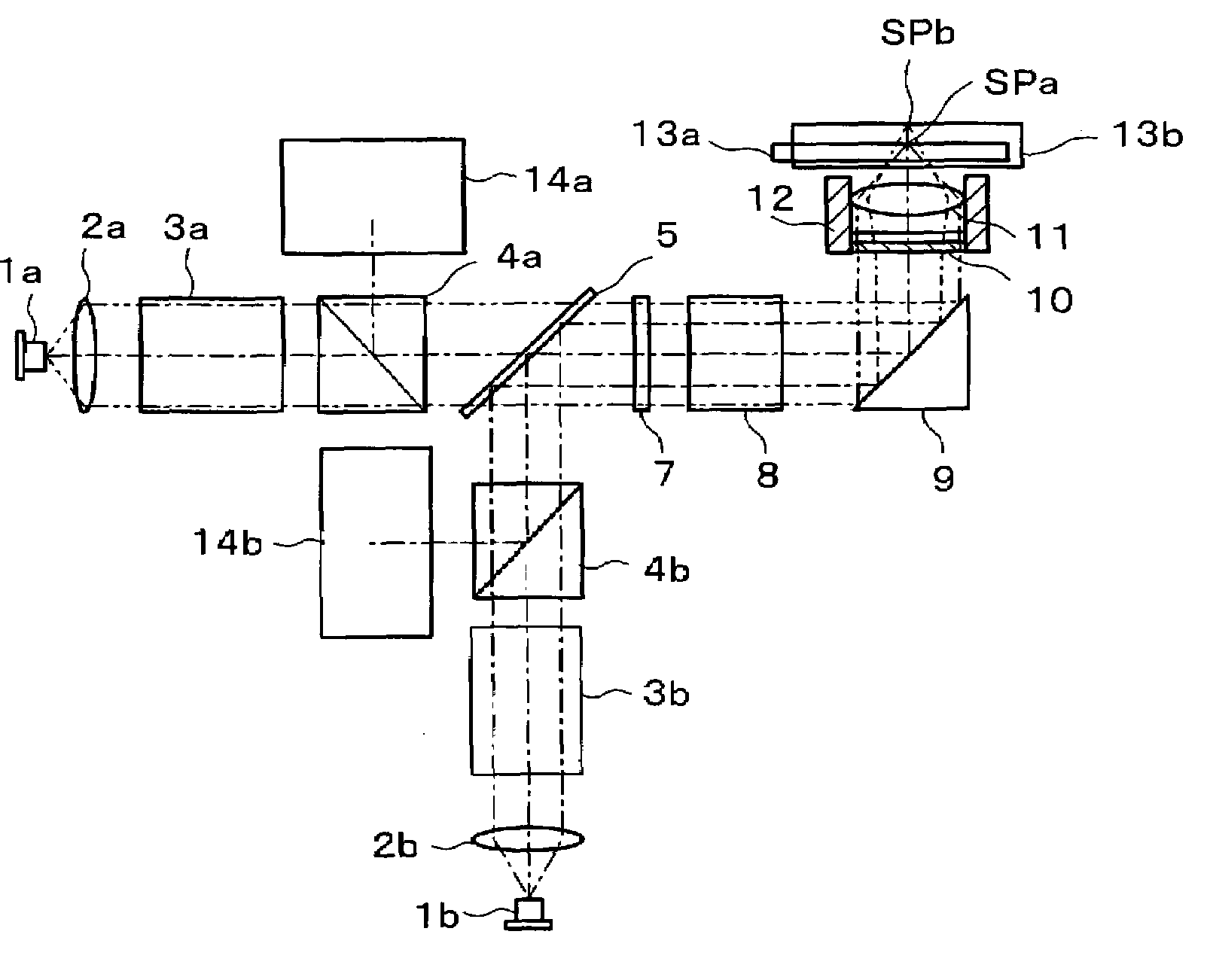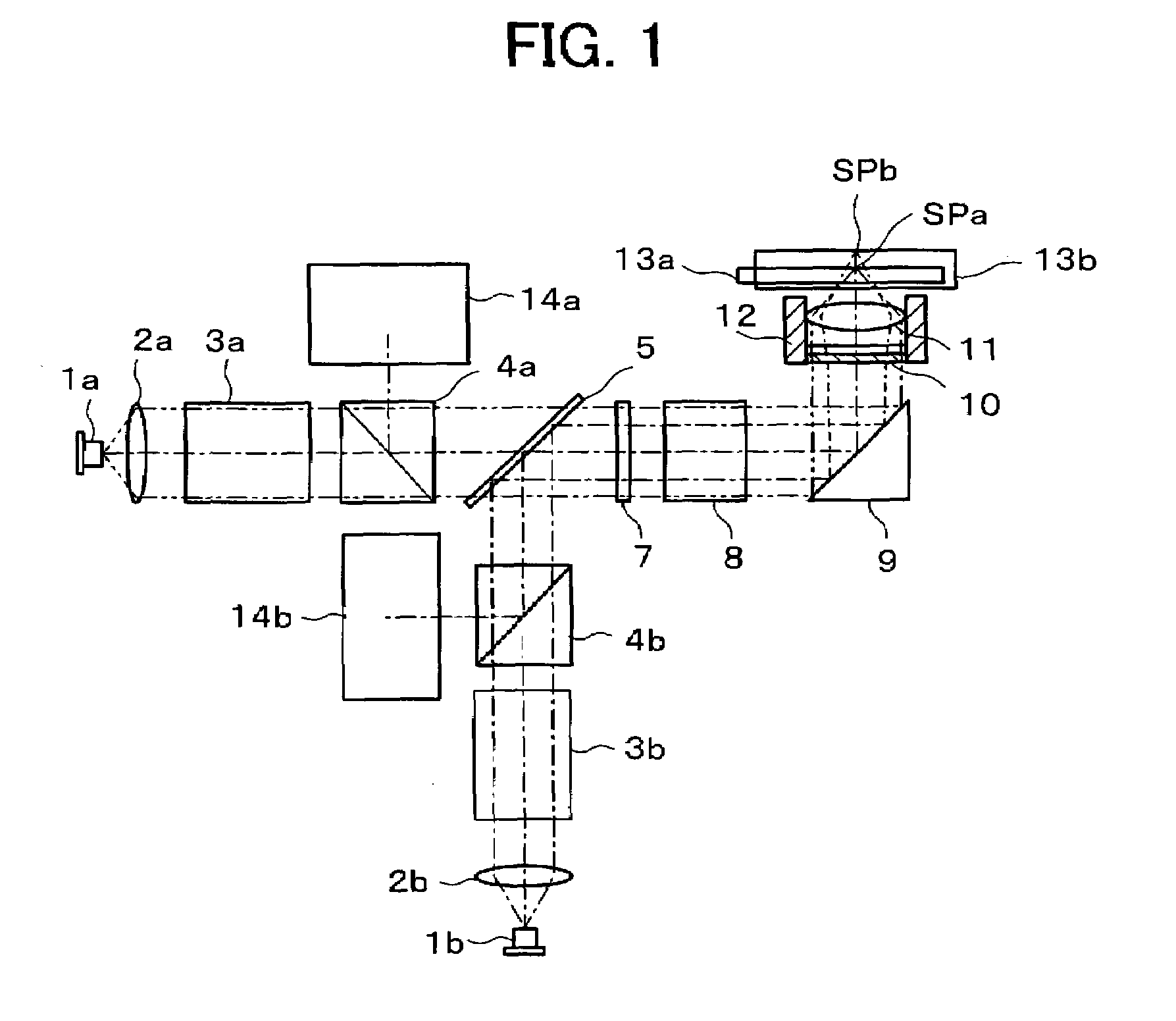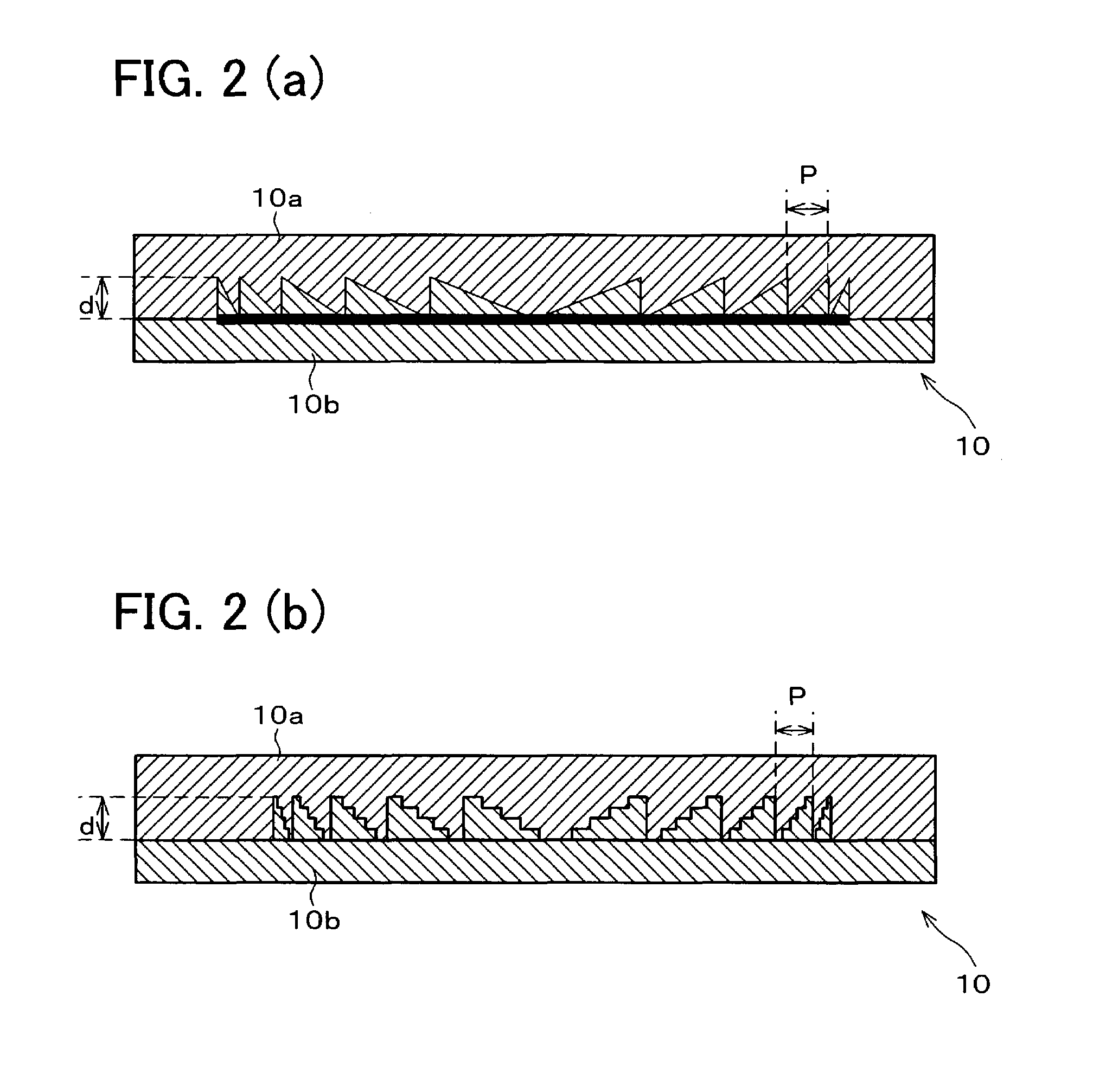Optical pickup
a pickup and optical technology, applied in the field of optical pickups, can solve the problems of poor quality light convergence to the focused spot, difficult to ensure compatibility, and rapid increase in coma aberration, and achieve the effect of aversatile optical pickup
- Summary
- Abstract
- Description
- Claims
- Application Information
AI Technical Summary
Benefits of technology
Problems solved by technology
Method used
Image
Examples
example
[0072]The following will describe examples in accordance with the present invention.
[0073]In the present example, wavefront aberration was specifically calculated for the next generation high density optical disk (wavelength=405 nm, substrate thickness=0.1 mm) and the DVD (wavelength 650=nm, substrate thickness=0.6 mm). Results are shown below. The wavefront aberration calculation was based on a combination-type diffractive element 10 using two types of glass, TPH55 and SYGH52, and objective lenses configured as in Tables 2, 3. Table 2 shows a lens configuration for the next generation high density optical disk, whereas Table 3 shows the lens arrangement for the DVD.
[0074]
TABLE 2Next Generation High Density Optical DiskSurfaceCurvatureSurfaceNo.RadiusDistanceMaterialCombination-Type1Infinity0.20*1Diffractive2Infinity0.20*2Element3Infinity0.05Objective Lens5 1.412.40*3616.370.10Optical Disk7Infinity0.10Polycarbonate8Infinity0.252482*1: TPH55_OHARA*2: SYGH52_OHARA*3: LAH67_OHARA
[0075]...
PUM
| Property | Measurement | Unit |
|---|---|---|
| refractive indices | aaaaa | aaaaa |
| refractive indices | aaaaa | aaaaa |
| wavelength λ2 | aaaaa | aaaaa |
Abstract
Description
Claims
Application Information
 Login to View More
Login to View More - R&D
- Intellectual Property
- Life Sciences
- Materials
- Tech Scout
- Unparalleled Data Quality
- Higher Quality Content
- 60% Fewer Hallucinations
Browse by: Latest US Patents, China's latest patents, Technical Efficacy Thesaurus, Application Domain, Technology Topic, Popular Technical Reports.
© 2025 PatSnap. All rights reserved.Legal|Privacy policy|Modern Slavery Act Transparency Statement|Sitemap|About US| Contact US: help@patsnap.com



